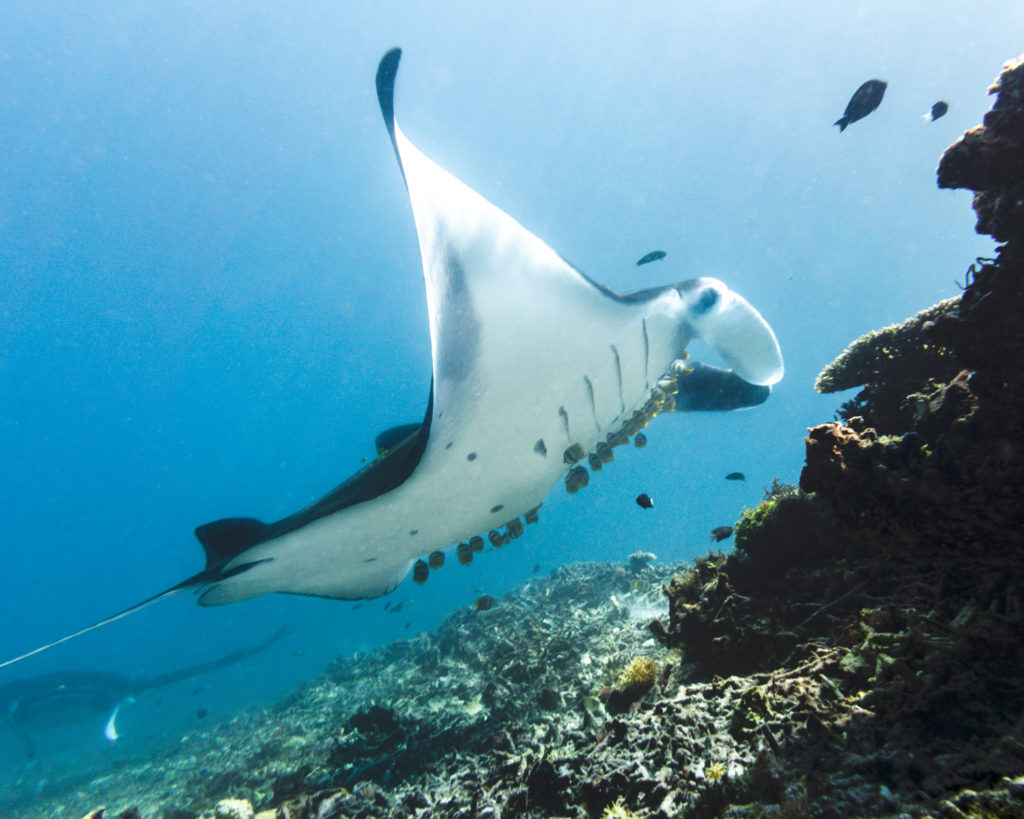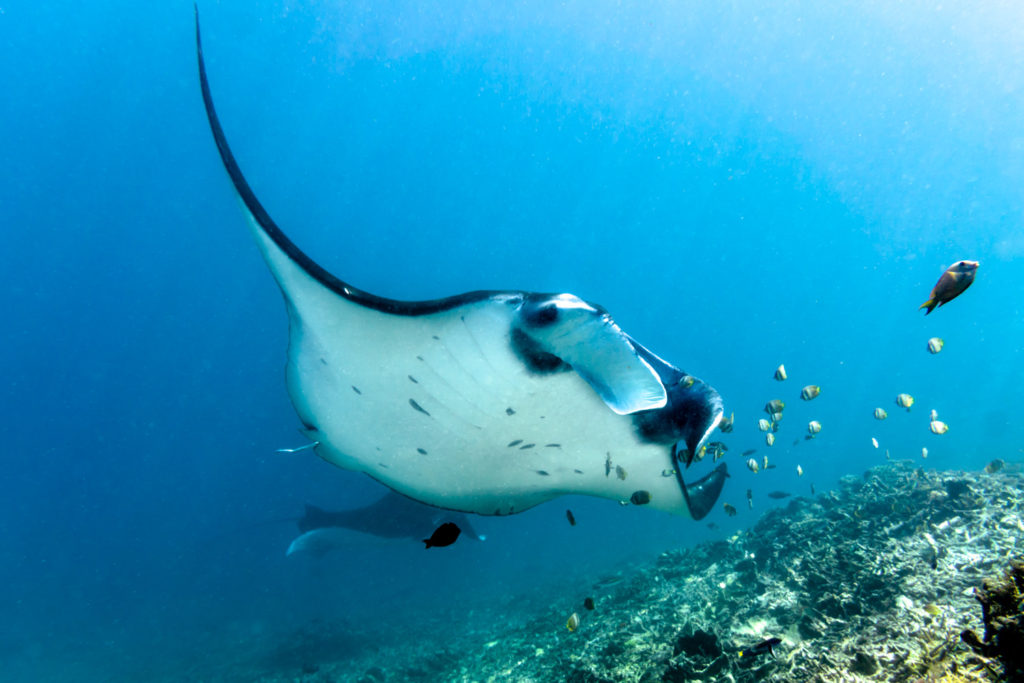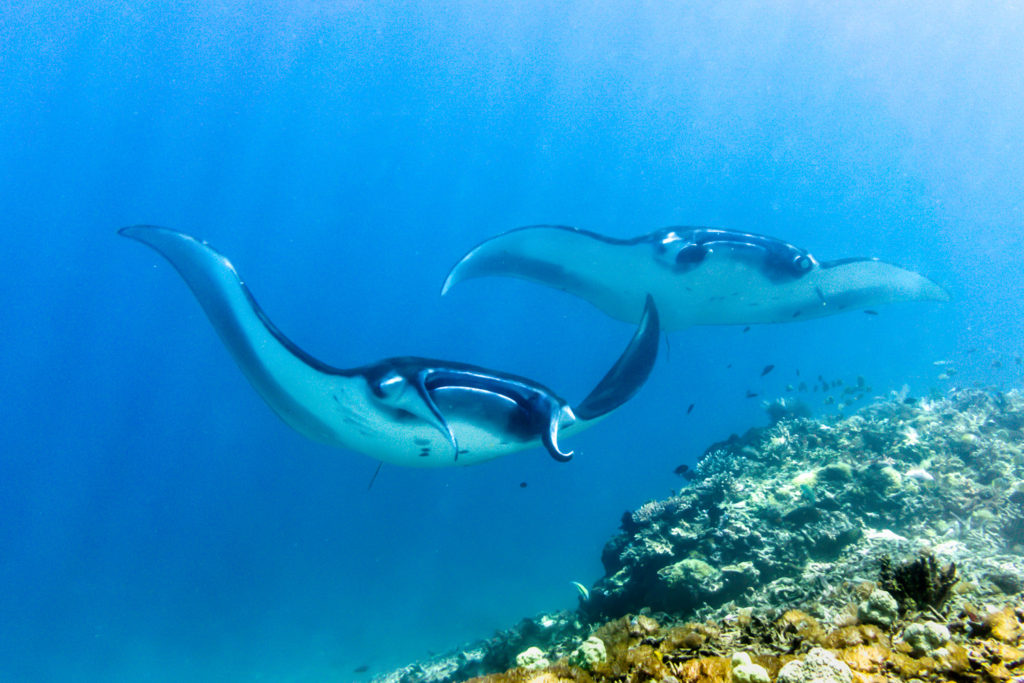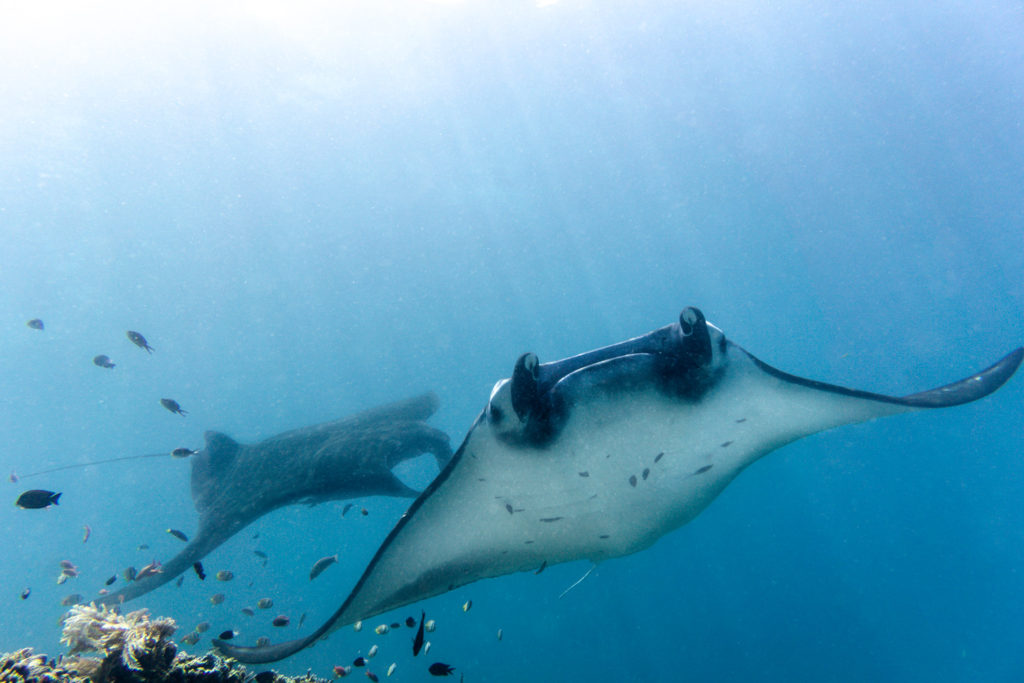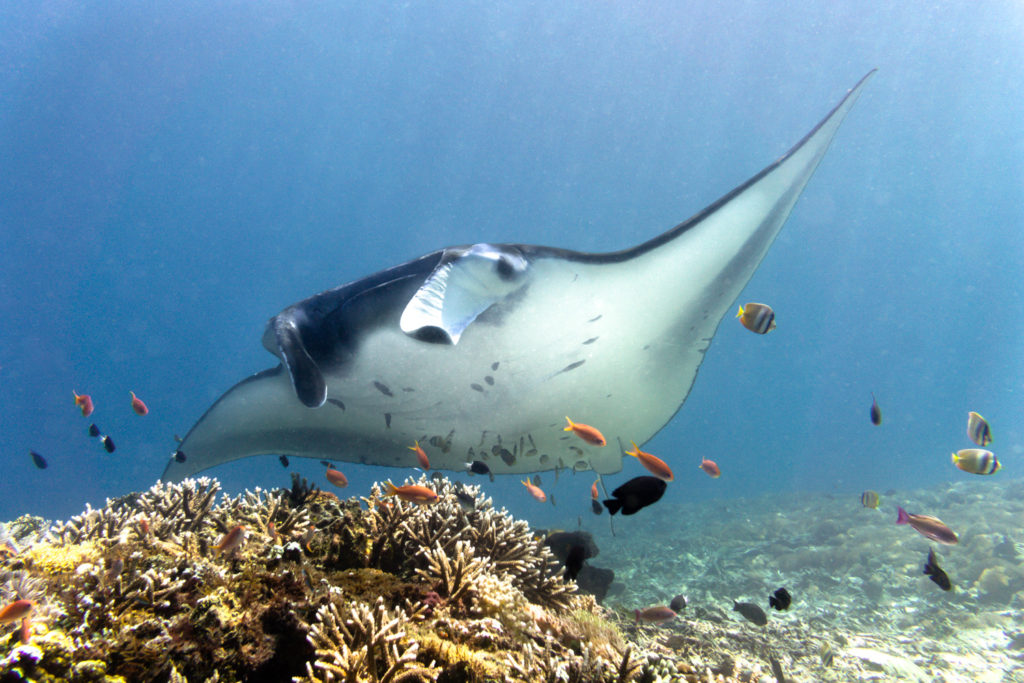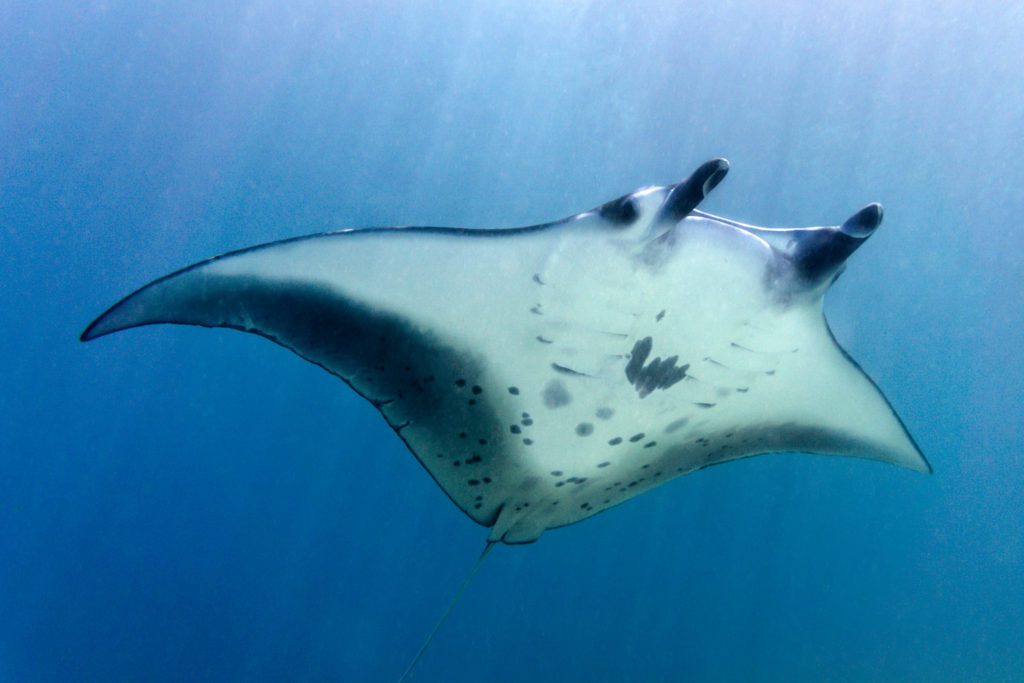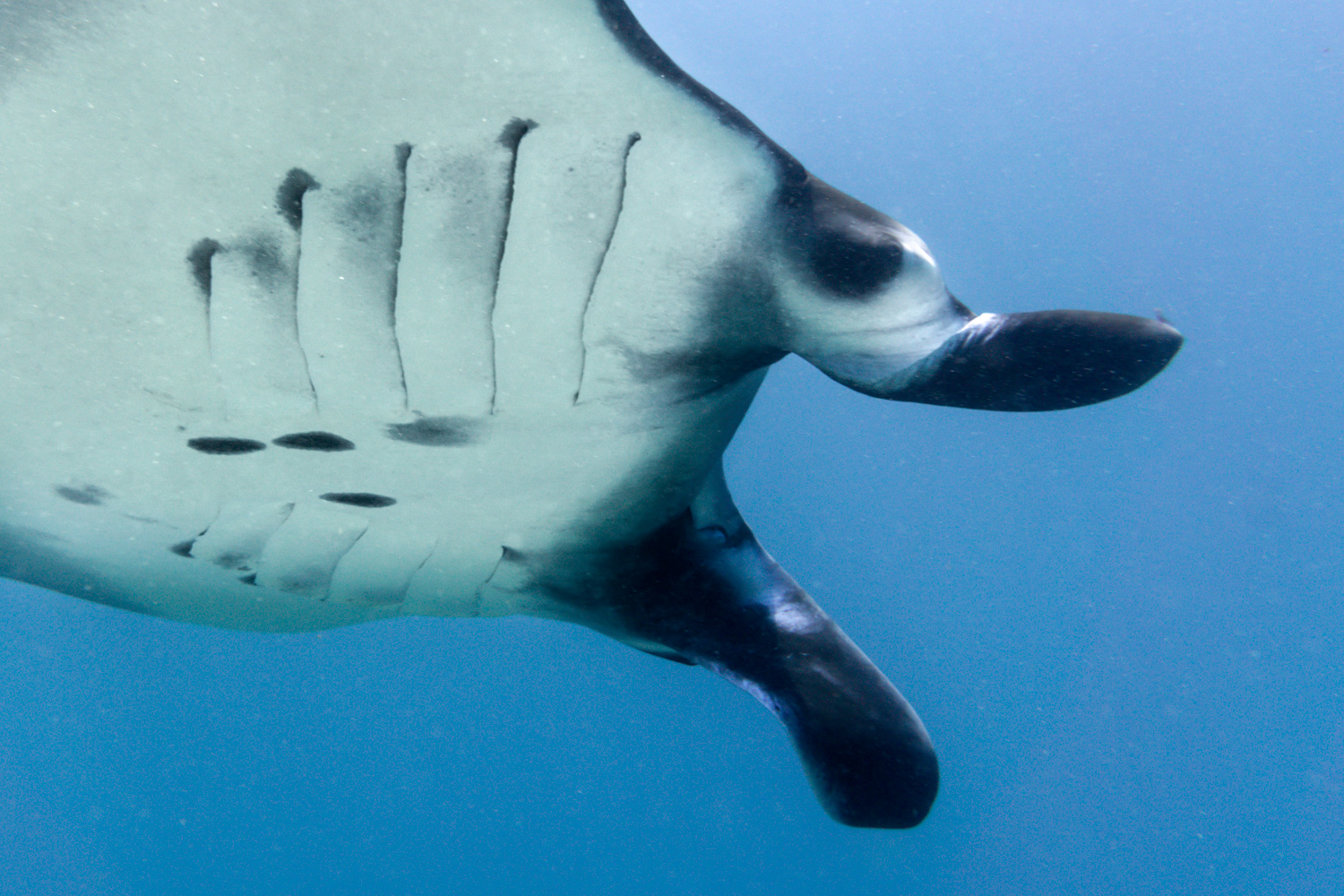Komodo – Manta Rays at Mawan
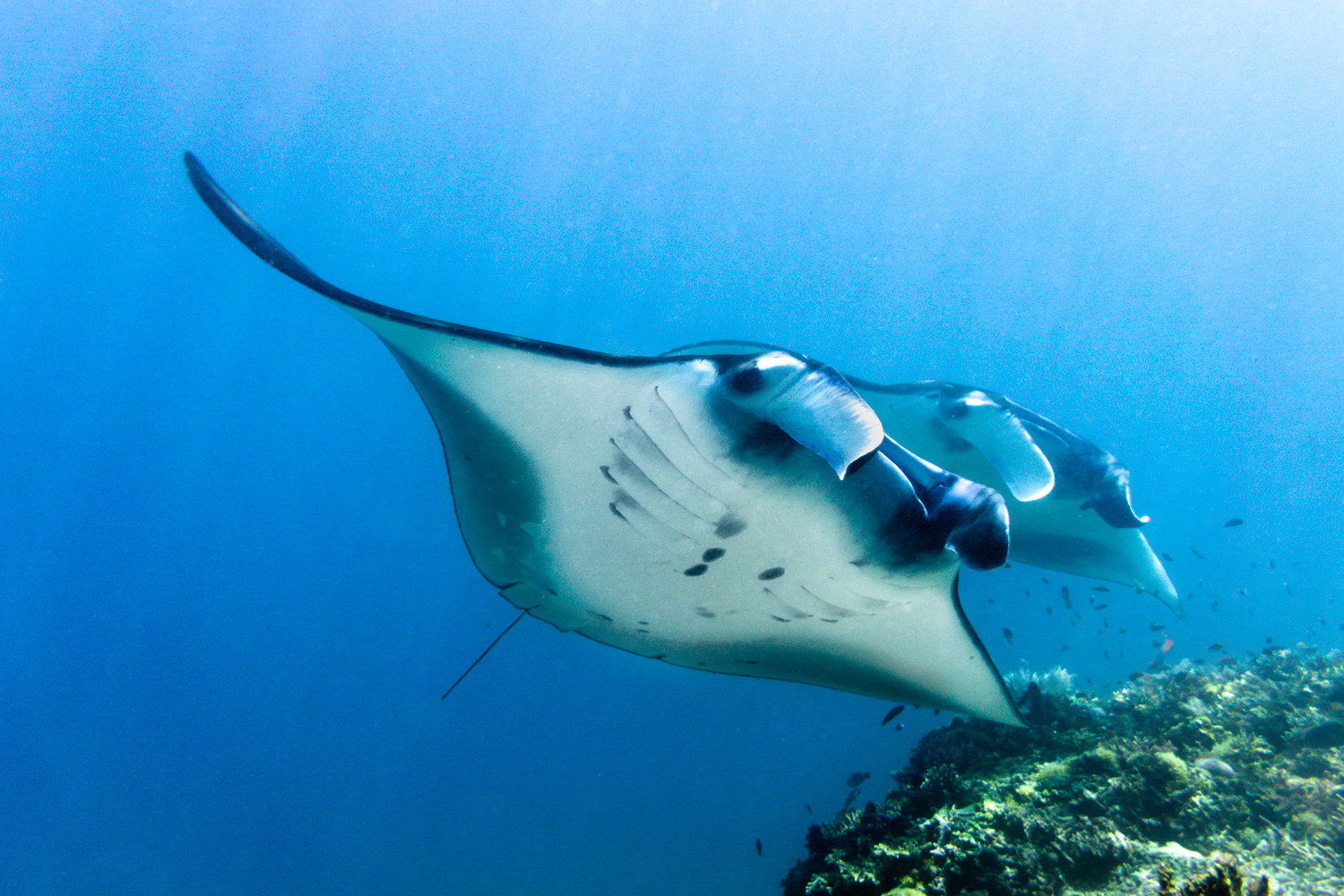
Manta rays are large, graceful creatures – elegant and ballet-like in their movements. Their wingspan is up to 18 feet (5.5 meters) in the manta species that is most often found in Komodo National Park (Manta alfredi). On a dive earlier this week we were up close with mantas for an extended stretch of time just off Mawan, a tiny island within Komodo. We’ve seen mantas on many of our previous dives in Komodo over the last two months, but on this dive the mantas were quite close for a lengthy period of time – circling around and over us, curious, sometimes just a few feet away. Flying is really the only way to describe their movement, propelled by large wing-like pectoral fins. The beauty of their form and motion is so impressive that one can get a kind of spiritual feeling while watching them – you wonder whether these creatures, so elegant and graceful, might also possess wisdom of some sort.
Mawan is a drift-dive site. Divers jump from the boat into a steady ocean current that runs along the length of the narrow little island. The current is powered by the rising and falling tides that flow between the Pacific and Indian Oceans, above and below Indonesia. Divers drift along the island’s sloping reef, and along the way you watch for mantas. If you find mantas you halt your drift to watch them. You stay as low and close to the reef or bottom as you can, so as not to get in the mantas’ way. Because the current can be very strong you usually have to find something on the bottom to hold on to so you don’t get carried away. You might secure your position with a reef hook and line, or sometimes you can find a small pocket of protected water where you can hold your position with just fin kicks. While you’re working hard to keep your position you look up at the mantas and watch them use their long lazy wing strokes to hover in the strong current, seemingly without any effort at all!
On this dive I had my Sony a6000 camera in its underwater housing, and was able to get some close photos of the mantas and their graceful moves. When two or more mantas fly together it’s like watching Air Force jets, banking and flying in formation. It’s sometimes hard to get clear sharp photographs of mantas because they are attracted to nutrient-rich currents that are carrying the zooplankton they feed on, so there’s usually lots of small stuff in the water, reducing the visibility and catching sunlight. I was happy to get some workable images as the mantas flew around us. Samira also had her camera, a Sony a6300 in a Nauticam housing, and was shooting video of the scene. It had been a relatively shallow dive, so we had enough air in our tanks to extend the dive to about 80 minutes.
